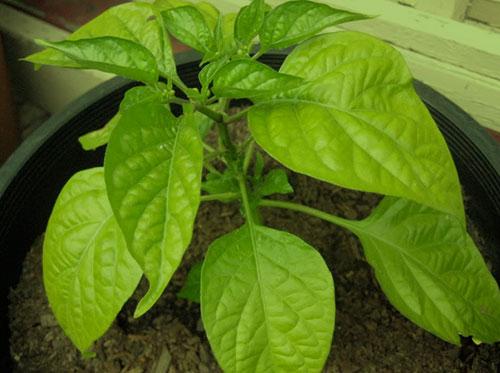Deficiency: Manganese deficiency symptoms, which often look like those of iron deficiency, appear as interveinal chlorosis (yellow leaves with green veins) on the young leaves, and sometimes tan, sunken spots that appear in the chlorotic areas between the veins. Plant growth may also be reduced and stunted. Manganese deficiency can occur when the pH of the growing medium exceeds 6.5, because it is tied up and unavailable for uptake. Deficiency can also occur from low fertilizer application rates, use of general purpose fertilizers (which typically have reduced micronutrient contents), excessive leaching or applying too many iron chelate drenches.


